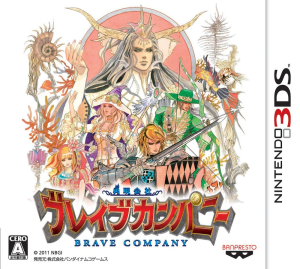 The good news is, the 3DS region-free hack works like a charm. Now you can play games from any region on any 3DS, which is excellent news for those of us eagerly awaiting the release of 7th Dragon III Code: VFD in October.
The good news is, the 3DS region-free hack works like a charm. Now you can play games from any region on any 3DS, which is excellent news for those of us eagerly awaiting the release of 7th Dragon III Code: VFD in October.
The other good news is that if you like nice-looking covers, there’s a 3DS game called Yuugen Gaisha Brave Company that has a pretty good one. It looks mysterious and intriguing and action-packed all at the same time. Brave Company also has an interesting premise, especially for fans of simulation/management games.
You play the head of a guild of adventurers whose job it is to handle the various quests that come in by hiring, equipping and dispatching adventurers, managing guild finances and developing the local sub-region all at the same time. Sounds like fun, right? Hahaha. You’re a gamer, you should be used to disappointment by now.
Where does it all go wrong? Maybe from the part where you notice the game cover looks like that and the in-game characters look like this:
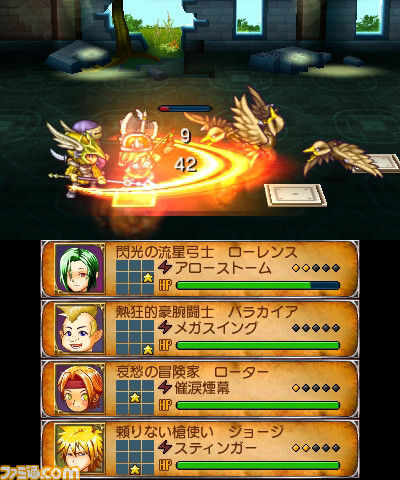 The game graphics are terrible. Using famous designers for the cover art isn’t a crime, but when there’s such a huge disparity between dream and reality, somebody has to pay! The truth is, Bandai Namco released Yuugen Gaisha Brave Company almost simultaneously for the iPhone and the 3DS, so this is more or less a smartphone game that just happens to have a 3DS port. Once you know it’s a free-to-play game, the meh graphics, tedious gameplay and all the other flaws start to make a little more sense.
The game graphics are terrible. Using famous designers for the cover art isn’t a crime, but when there’s such a huge disparity between dream and reality, somebody has to pay! The truth is, Bandai Namco released Yuugen Gaisha Brave Company almost simultaneously for the iPhone and the 3DS, so this is more or less a smartphone game that just happens to have a 3DS port. Once you know it’s a free-to-play game, the meh graphics, tedious gameplay and all the other flaws start to make a little more sense.
– The biggest problem: there isn’t much to do as guild head. Send adventurers out, rest till they come back, listen to their report, send them out again, repeat whole process forever.
You can hire new adventurers or upgrade your town while waiting, but that takes a few seconds and then it’s back to resting and reading reports. Apparently in the smartphone game, you have to wait real-time hours for adventurers to return (or pay bux to make them come back faster). Instead of filling that wait time with something substantial for the 3DS version they just went with nothing but rest, rest and more rest.
– In theory you’re supposed to match adventurer talents to the individual tasks at hand, adding a bit of strategy to the gameplay. In practice, quest descriptions are so vague that you never know what you’ll be doing until you get there. Most quests just say “We need some help here!” You send a team over and they fail because they didn’t have the particular skill needed to succeed. For example maybe the quest involves chopping wood, but you didn’t send any axe-users over. Or the quest-giver needs a certain kind of wood to fix a bridge, but you didn’t bring any because they didn’t tell you in advance.
– Quest success is largely a matter of luck, partly because of the lack of information I listed above and partly because event results are just random sometimes. Say you get a quest to give an old man a massage. Your options are “Go for it!” and “Try not to kill him.” Sometimes you pick the first option and the quest succeeds. Other times you pick the same first option and fail. Presumably it’s a different old man every time, but couldn’t they have given you some hint before you picked?
– Quest variety is low, especially early on. Fight generic monsters, take poorly-explained quest, go foraging for some random item. Once in a while you get a delivery quest and a matchmaking quest where you try to pair off adventurers so they can have babies later. I didn’t get to explore that last one too quickly because adventurers always quit before they could breed.
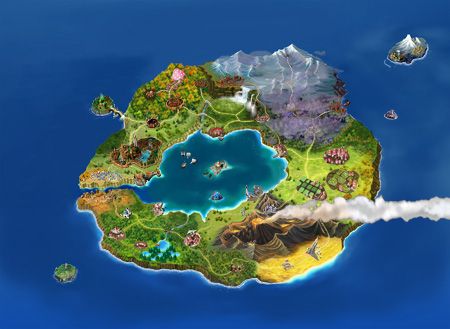 – Extermination quests do feature combat, but said combat largely plays out automatically without your input. You set the characters on the field in a 3×3 and they walk slowly towards the enemy, attacking as they come in range. The bar at the top of the screenshots below shows the enemies coming up and how close they are to your party.
– Extermination quests do feature combat, but said combat largely plays out automatically without your input. You set the characters on the field in a 3×3 and they walk slowly towards the enemy, attacking as they come in range. The bar at the top of the screenshots below shows the enemies coming up and how close they are to your party.
There is some slight interaction, however, as you get to pick special attacks from the bottom screen. Each adventurer has one which can be used a few times per battle. The process goes: set adventurers down, let them encounter enemies, time skill use on enemies so you can hit them before they hit you because each hit will take like 20% of your HP, hope you win, end battle.
– Battles can be quite tough because enemies are usually weak to very specific attacks. A flying bee won’t be weak to all archers, just archers with a very specific special attack. But of course, the game certainly won’t tell you which attacks are strong against which enemies until you’re actually face-to-face with them, by which time it’s far too late to do anything about it. Since Brave Company is just a ported smartphone game, I suspect the original designers deliberately kept such details in the dark to lure you into making costly mistakes which you can then pay to ‘correct’ with real money.
– To further tempt you into paying for success, the penalty for failure is rather steep: adventurers who fail or get wiped out in battle will quickly get unhappy and quit the company. You can either spend game money bribing them to stay or spend game money hiring new adventurers to replace them. One or the other, because a 100% quest success rate is almost impossible to achieve. The game hints that if you spend a lot of time and money setting up bars and other facilities near the guild, adventurers will be more likely to stay, but the function of these facilities are never fully explained so even that might not work. I don’t know because Bandai Namco doesn’t want me to know.
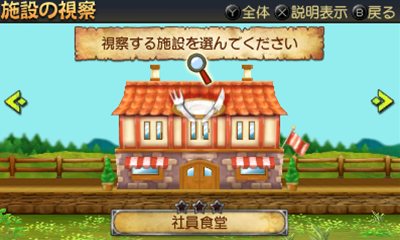 – The game premise of developing and training adventurers? A lie, through and through. Adventurer growth is slow and impossible to track because there’s no EXP or other growth indicator. There are no training halls and there’s no real explanation of what stats mean in practical terms. There’s an HP bar when you fight but there are no numbers so you can’t tell if you’ve gotten stronger or not. You just send adventurers out on enough quests and one day they’ll offer to class up. What was the trigger? How many quests did it take? What can I do to speed this process up? Ha, they’re not going to tell you, it might actually improve the game!
– The game premise of developing and training adventurers? A lie, through and through. Adventurer growth is slow and impossible to track because there’s no EXP or other growth indicator. There are no training halls and there’s no real explanation of what stats mean in practical terms. There’s an HP bar when you fight but there are no numbers so you can’t tell if you’ve gotten stronger or not. You just send adventurers out on enough quests and one day they’ll offer to class up. What was the trigger? How many quests did it take? What can I do to speed this process up? Ha, they’re not going to tell you, it might actually improve the game!
– The way to “progress” is to take enough quests to raise your reputation in a town. Then they recommend you to residents in the next town and you can take quests from there. And on and on. The problem is, each town only has 1-5 quests you can take and it takes a while for your reputation to build up, so you’ll be doing the same quests over and over and over and over again just to get to the next town so you can repeat the process. All the while when there’s no real story so you’re not really sure why you’re doing this.
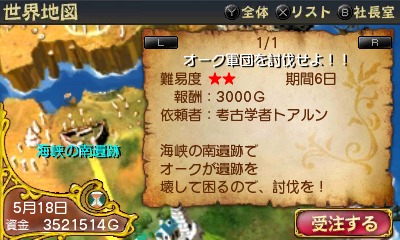 – I was really looking forward to the equipment synthesis and town development parts of the game, but they turned out to be worthless because it takes forever to get anything done. Synthesis is so tedious I could cry. If you need 20 of a certain stone to build a certain facility, you’ll have to send 20 adventurers on 20 quests over 20 months because they usually bring back only 1 of anything you send them to get. Oh, and forage quests don’t pay any money so you’re out of pocket for those 20 times.
– I was really looking forward to the equipment synthesis and town development parts of the game, but they turned out to be worthless because it takes forever to get anything done. Synthesis is so tedious I could cry. If you need 20 of a certain stone to build a certain facility, you’ll have to send 20 adventurers on 20 quests over 20 months because they usually bring back only 1 of anything you send them to get. Oh, and forage quests don’t pay any money so you’re out of pocket for those 20 times.
This tiresome process applies for almost anything you want to make, from the most basic armor to the largest buildings. And as I’ve already explained, it’s not always clear what each building does in the first place. Worst thing is, if the facility is destroyed, your adventurers quits or you decide to change their equipment, you lose that facility or equipment forever. Those iron plates you spent on that armor is gone, the game just throws it away without even selling it and giving you the money back. Now you have to spend another 20 game months gathering enough stones to replace it. More “free-to-play” strategies to part you from your money, eh?
– High-level killer bees will occasionally attack your headquarters and destroy whatever facilities you’ve build up so far. If you’re lucky to have all employees at home at the time and in fighting shape AND you’re lucky enough to have special attacks they’re weak against, good for you. Most likely you won’t, so say goodbye to all that hard work you put in over months and months.
– None of the above would be that terrible if you were given the chance to correct mistakes, but only one save point + auto save = you’re permanently screwed all the time.
Summary – Yuugen Gaisha Brave Company has ugly graphics, vague, boring and repetitive quests with a high failure rate, hard, unexciting battles also with a high failure rate, disloyal employees who quit without notice, no interesting NPCs to interact with, a tedious synthesis process with no clear benefits and in general no exciting gameplay anywhere to be found. The cover is nice, but there’s no reason to actually play the game. None.
Enough of this. I took a break from my regularly scheduled games to test the region-free exploit and have some guild management fun. I achieved one of these objectives. That’s good enough. Now back to whatever I said I was going to play last time wot I don’t even remember. Aight, see ya.
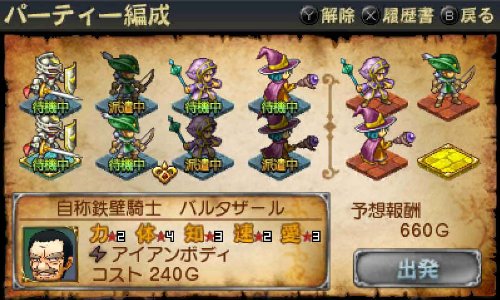
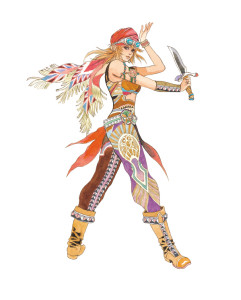
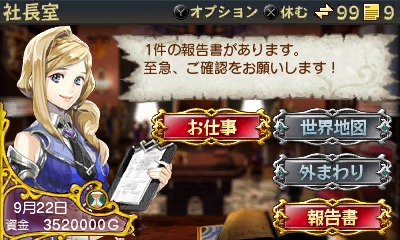

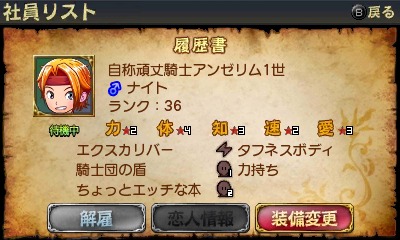

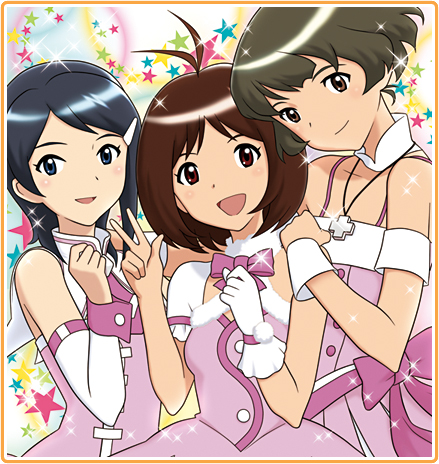

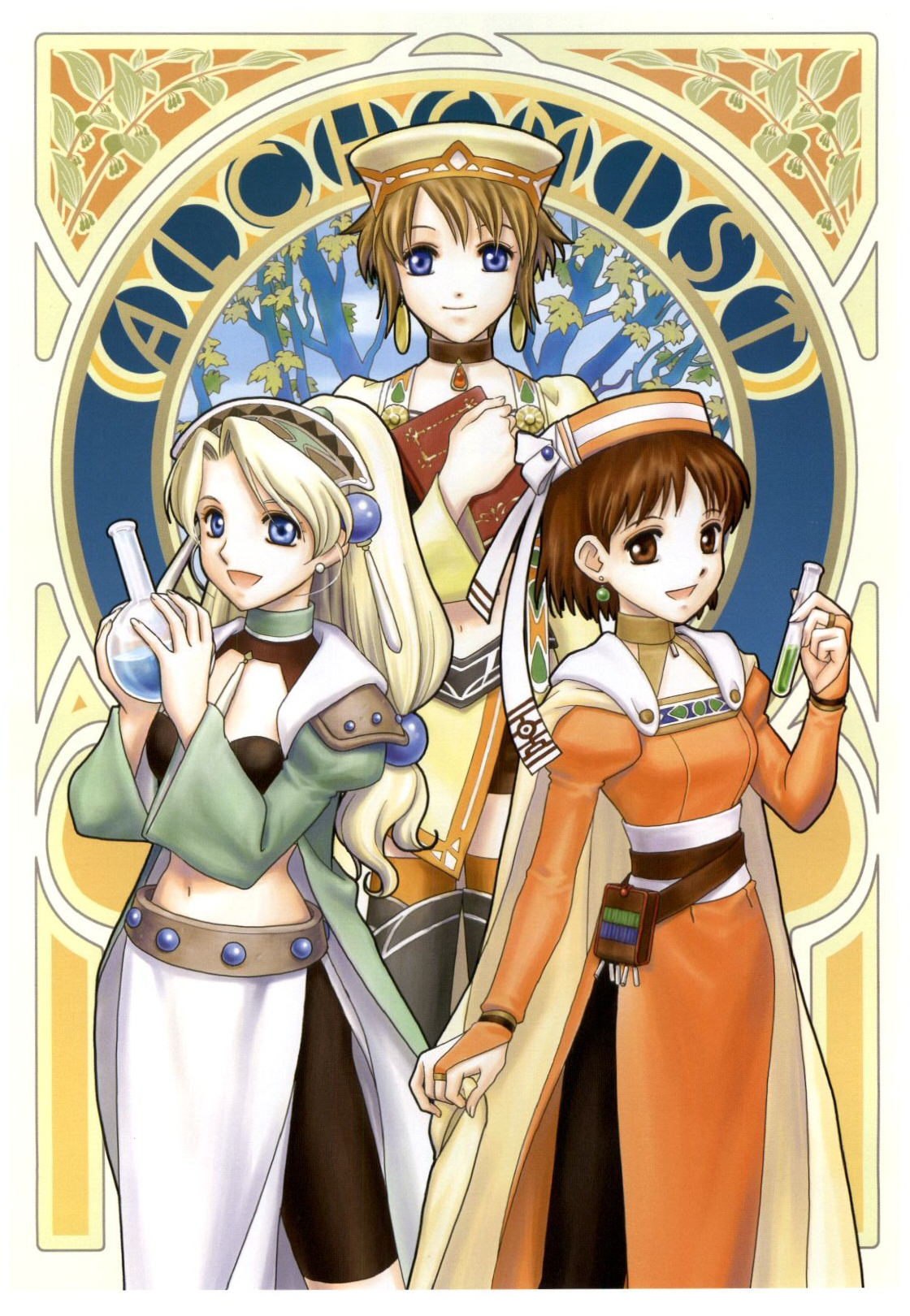
Oooh, you got region free working, grats! Although I think 3DS actually has a pretty good track record with game localization; even the more niche games seems to get localized on the 3DS. Anyway, I’m eagerly looking forward to 7th dragon III myself. I think it was suppose to be a 5 part series but from the look of III, it looks like they’re wrapping things up.
Yeah, I’m torn between getting 7th Dragon III on day one or waiting a year or two to see whether Atlus brings it over or not. I’m also worried about whether whatever new developer is in charge of the series will be as good as Imageepoch. Maybe I’ll wait a bit and see which way the wind blows. I’ll be busy with Summon Night 5 and Legend of Legacy in October anyway.
I recognize the cover artist as the person who usually does it for the SaGa games.
What a hilarious bait and switch to not actually use his art even as just portraits in-game though
I can’t believe I fell for it. Well, for that and the guild management premise. Let this be a lesson to all of us.